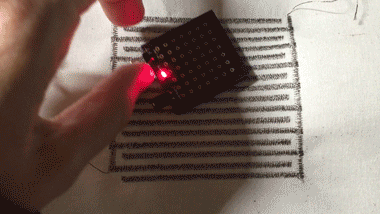Shaf has been putting enzymes to work in our part of the EPSCoR project, “Powering the Kentucky Bioeconomy for a Sustainable Future.” His goal is to quickly measure the activity of tiny amounts of enzymes supported on membranes. Membranes covered with enzymes can convert one type of chemical to another at room temperature–but it’s unclear …
Author Archives: cindy.harnett@louisville.edu
Flex time
Back on campus after sabbatical. My group is focused on soft, flexible materials including stretch fiber optics that sense motion, non-stretch fibers that constrain motion, and thin porous membranes that drive flows– featured in Jaz Beharic’s thesis. Yes, Jaz graduated this month. Shaf continues on the membrane project with a more biological focus: porous surfaces …
we heard you liked fibers
The Material Robotics workshop of the RSS conference at MIT was an intense day. We were energized by rapid-fire 3 minute presentations, mostly on soft and squishy robots, with breaks for posters. Here is our abstract and below is the poster from our lab, all about embedding functional fibers into materials that can sense and actuate. This …
Seeing the light
This video shows a stretchable optical fiber that can report its own length. We have been developing sensor fibers that work with stretchable materials like athletic tape. The screen in the background shows the light intensity decreasing as the tape is stretched, and climbing back up as the tape relaxes to its original length. The …
Everyone needs more contacts
Last week I was at the 2017 ACM CHI conference in Denver. The conference covered human-computer interaction topics ranging from accessibility, to education, to new hardware and materials for interacting with computers. When it comes to analyzing what people are doing with input devices, machine learning turned up more often than not. People presented all kinds of outputs …



